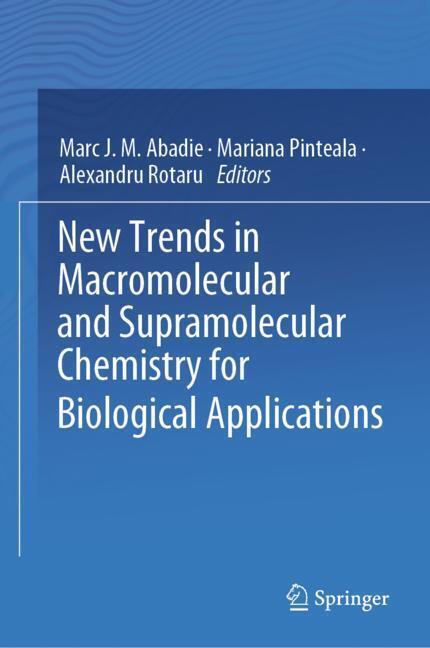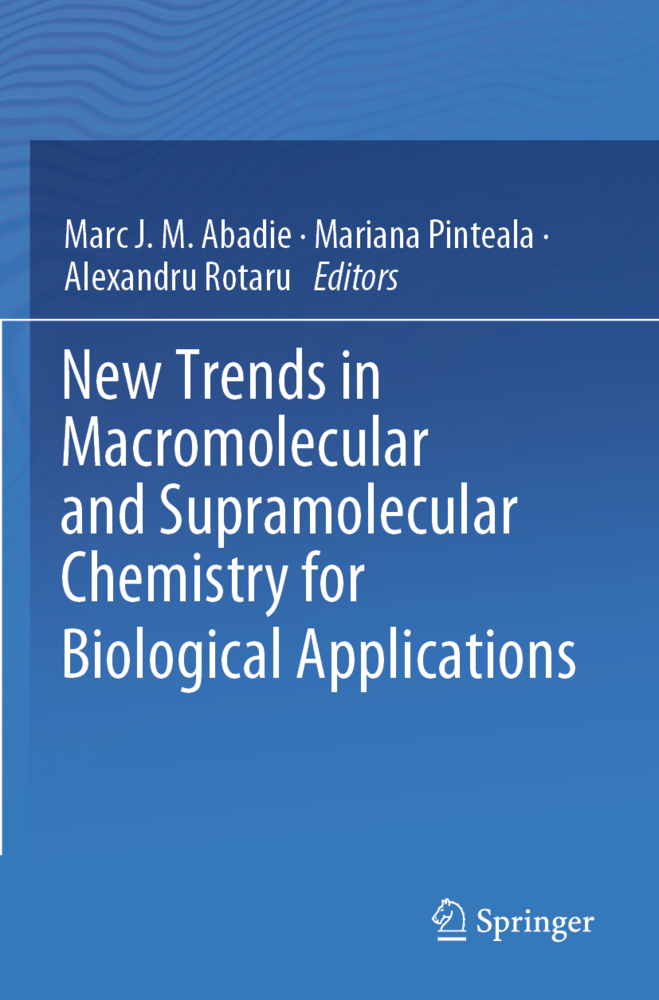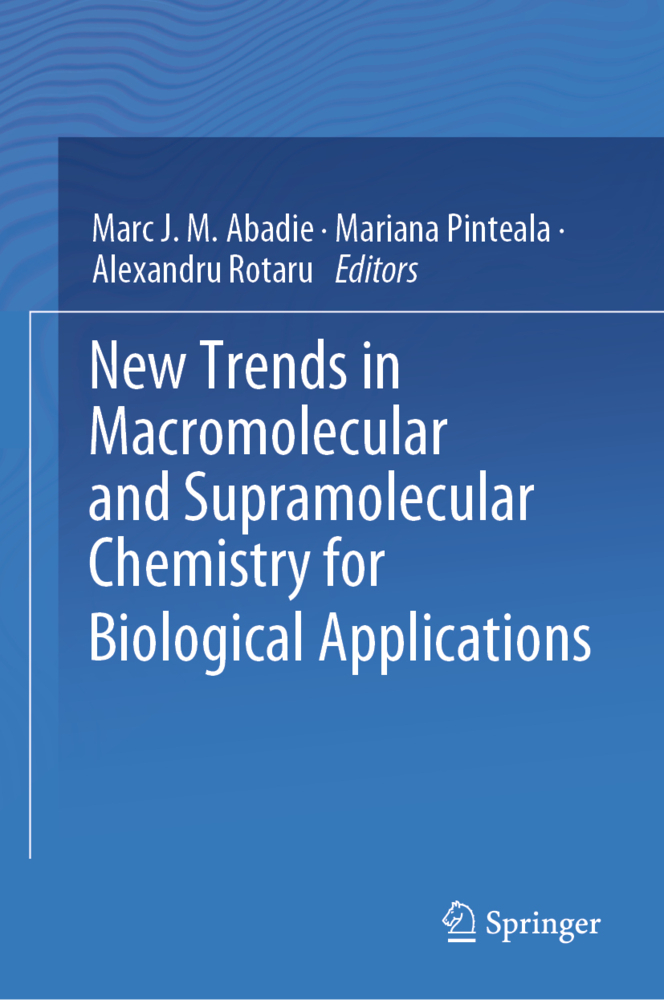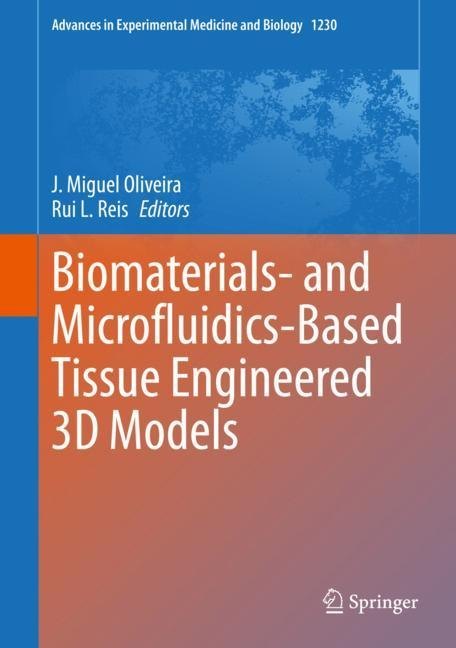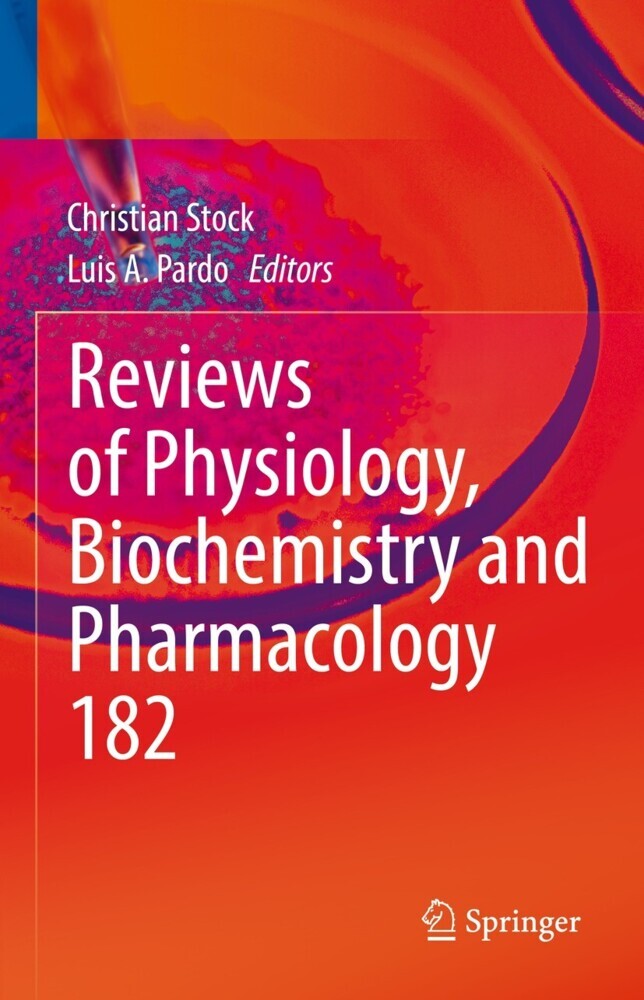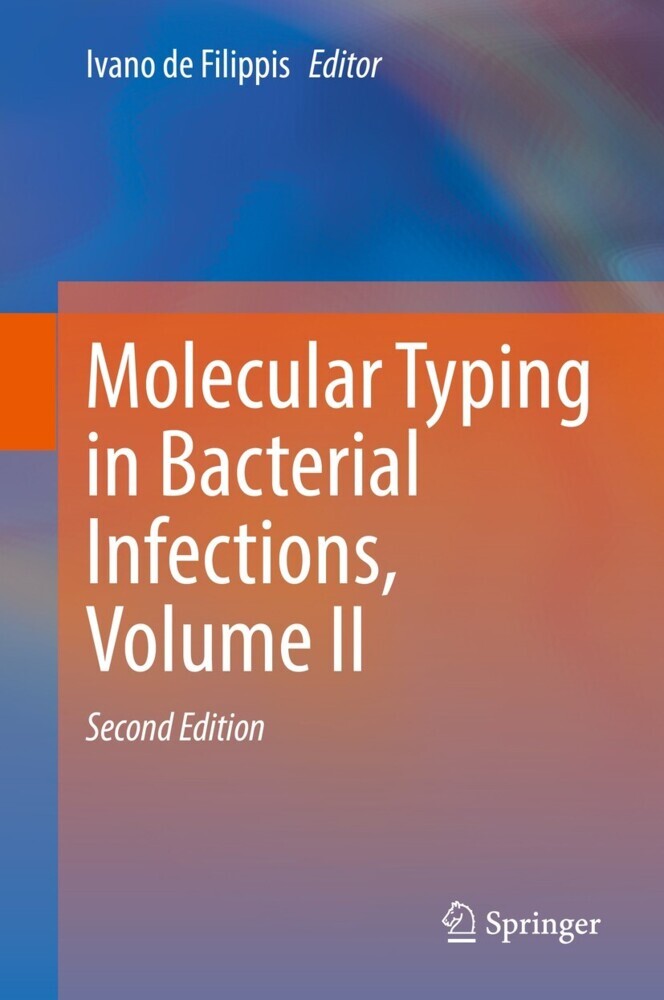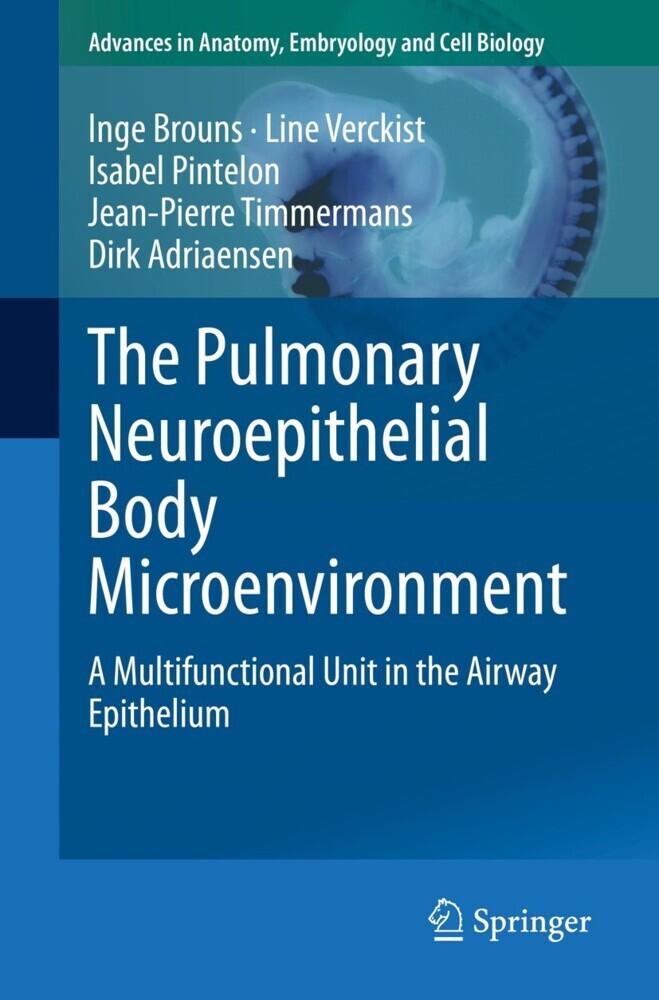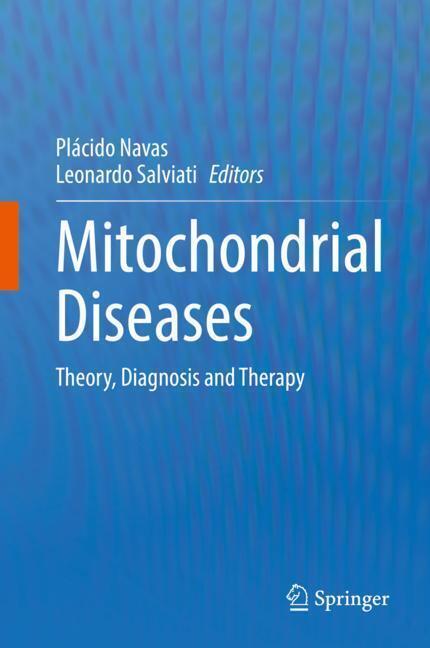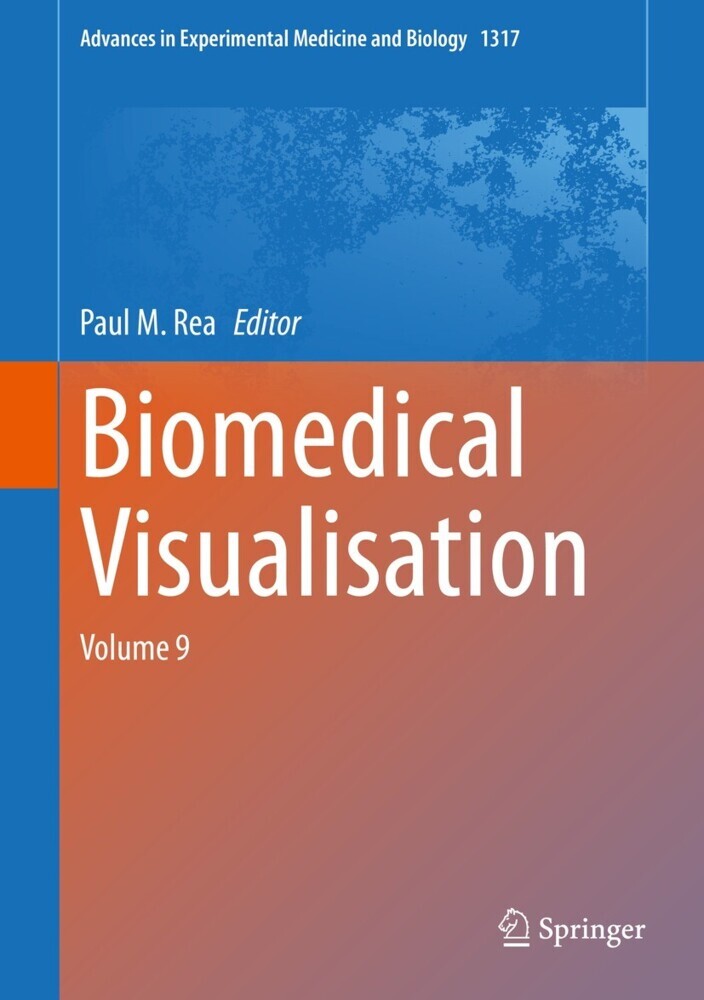New Trends in Macromolecular and Supramolecular Chemistry for Biological Applications
New Trends in Macromolecular and Supramolecular Chemistry for Biological Applications
This contributed volume applies the insights of supramolecular chemistry to biomedical applications such as ions/water transport through nano-scale channels, gene therapy, tissue engineering and drug delivery, to cite some of the major investigations.The challenge is to understand the mechanisms of transport through tissues particularly in the therapeutic treatment of a disease where the active drug must be delivered directly to diseased cells without affecting healthy cells. As a result, smaller quantities of active substances can be used to treat the disease. Another interest concerns new ways to administer gene therapy. If genes are often delivered to their target cells by adapted viruses, the supramolecular non-viral 'vectors' using dynamic nano-frameworks and nano-structures are presented. In addition, it is important to reconstruct damaged tissues by mimicking natural processes in cells and polymers, such as tissue engineering and self-healing. Different options are here discussed: e.g. hydrogels based on chitosan, a carbohydrate polymer, are proving especially promising for tissue engineering and drug delivery. For controlled delivery of drugs or other biologically active compounds, hydrogels sensitive to the most important stimuli in the human body, such as temperature, pH, ionic strength, glucose and biomolecules released by the organism in pathological conditions have been developed. Finally, to assist and validate the experimental studies, computer modelling and simulations of large-sized molecular structures and systems using different molecular dynamics and quantum mechanical techniques are developed based on the experimental and chemistry synthesis.
This book is of great interest for graduate students, researchers and health professionals interested in acquiring a better understanding of the mechanisms of medical treatments. In addition, it provides numerous tools to develop better therapies for human diseases.
Prof. Marc Abadie
Professor Emeritus, University of Montpellier, Institute Charles Gerhardt Montpellier - Aggregates, Interfaces & Materials for Energy (ICGM/AIME, UMR CNRS 5253). He was Full Professor @ the University of Montpellier and Head of Laboratory of Polymer Science and Advanced Organic Materials - LEMP/MAO. Dr es Sciences from Institute Charles Sadron (former Centre de Recherches sur les Macromolécules), University Louis Pasteur Strasbourg. His present activities concern High performance composites and nanocomposites, UV & EB coatings, Biomaterials, Green Chemistry and Aircrafts manufacturing. He has published 14 books and 12 patents. He has advised nearly 95 M.S. and 52 Ph.D. students with whom he has published over 430 per reviewed papers. More than 45 years experience in Polymer Science with 10 years in the industry (IBM USA, MOD UK, SNPA/Total France). Currently ERA CHAIR holder Horizon 2020.
Dr. Mariana Pinteala
Centre of Advanced Research in Bionanoconjugates and Biopolymers department, 'Petru Poni' Institute of Macromolecular Chemistry. Interests: development of new polymer-based materials: supramolecular (co)polymers; polymer-functionalized nanoparticles; interpolymer complexes between hydrophobic-hydrophylic copolymers; blend and networks containing silicon-based polymers; aggregation of block copolymers in solution by fluorescence; synthesis and characterization of polymers and copolymers (especially siloxane containing block copolymers); cationic, anionic and radical copolymerization; structure-property relationship evaluation, data analysis, and interpretation; biopolymer-based nanocomposites for biomedical applications; dynamic polymeric matrixes for tissue engineering; antifungal nanotherapeutics; focal gene and drug delivery systems; ESR spectroscopy.
Dr. Alexandru Rotaru
Centre of Advanced Research in Bionanoconjugates and Biopolymers department, 'Petru Poni' Institute of Macromolecular Chemistry. He received his PhD (Organic Chemistry) in 2005 at the 'Al. I. Cuza' University of Iasi, Romania. He is senior researcher at 'Petru Poni' Institute of Macromolecular Chemistry, Iasi, Romania since 2012. During his PhD studies Alexandru Rotaru spent twelve moths DAAD scholarship at the Department of Organic Chemistry, Heidelberg University, Germany. After the completion of his PhD studies he continued with postdoctoral position at Inorganic Chemistry Department, Heidelberg University, Germany (24 months), followed by another postdoctoral position at Aarhus University, Denmark (4 years). Scientific fields of interest include: organic synthesis, oligonucleotide chemistry, preparation and characterization of DNA-based nanostructures, supramolecular chemistry, metal nanoparticles and nanoconjugates of metal nanoparticles with carbon nanotubes. Alexandru Rotaru is author and co-author of 37 publications and multiple participations at national and international conferences. He was project member and director in European and national projects, and he currently is member of the Romanian Chemical Society.
This book is of great interest for graduate students, researchers and health professionals interested in acquiring a better understanding of the mechanisms of medical treatments. In addition, it provides numerous tools to develop better therapies for human diseases.
Prof. Marc Abadie
Professor Emeritus, University of Montpellier, Institute Charles Gerhardt Montpellier - Aggregates, Interfaces & Materials for Energy (ICGM/AIME, UMR CNRS 5253). He was Full Professor @ the University of Montpellier and Head of Laboratory of Polymer Science and Advanced Organic Materials - LEMP/MAO. Dr es Sciences from Institute Charles Sadron (former Centre de Recherches sur les Macromolécules), University Louis Pasteur Strasbourg. His present activities concern High performance composites and nanocomposites, UV & EB coatings, Biomaterials, Green Chemistry and Aircrafts manufacturing. He has published 14 books and 12 patents. He has advised nearly 95 M.S. and 52 Ph.D. students with whom he has published over 430 per reviewed papers. More than 45 years experience in Polymer Science with 10 years in the industry (IBM USA, MOD UK, SNPA/Total France). Currently ERA CHAIR holder Horizon 2020.
Dr. Mariana Pinteala
Centre of Advanced Research in Bionanoconjugates and Biopolymers department, 'Petru Poni' Institute of Macromolecular Chemistry. Interests: development of new polymer-based materials: supramolecular (co)polymers; polymer-functionalized nanoparticles; interpolymer complexes between hydrophobic-hydrophylic copolymers; blend and networks containing silicon-based polymers; aggregation of block copolymers in solution by fluorescence; synthesis and characterization of polymers and copolymers (especially siloxane containing block copolymers); cationic, anionic and radical copolymerization; structure-property relationship evaluation, data analysis, and interpretation; biopolymer-based nanocomposites for biomedical applications; dynamic polymeric matrixes for tissue engineering; antifungal nanotherapeutics; focal gene and drug delivery systems; ESR spectroscopy.
Dr. Alexandru Rotaru
Centre of Advanced Research in Bionanoconjugates and Biopolymers department, 'Petru Poni' Institute of Macromolecular Chemistry. He received his PhD (Organic Chemistry) in 2005 at the 'Al. I. Cuza' University of Iasi, Romania. He is senior researcher at 'Petru Poni' Institute of Macromolecular Chemistry, Iasi, Romania since 2012. During his PhD studies Alexandru Rotaru spent twelve moths DAAD scholarship at the Department of Organic Chemistry, Heidelberg University, Germany. After the completion of his PhD studies he continued with postdoctoral position at Inorganic Chemistry Department, Heidelberg University, Germany (24 months), followed by another postdoctoral position at Aarhus University, Denmark (4 years). Scientific fields of interest include: organic synthesis, oligonucleotide chemistry, preparation and characterization of DNA-based nanostructures, supramolecular chemistry, metal nanoparticles and nanoconjugates of metal nanoparticles with carbon nanotubes. Alexandru Rotaru is author and co-author of 37 publications and multiple participations at national and international conferences. He was project member and director in European and national projects, and he currently is member of the Romanian Chemical Society.
J.M. Abadie, Marc
| ISBN | 9783030574567 |
|---|---|
| Artikelnummer | 9783030574567 |
| Medientyp | E-Book - PDF |
| Copyrightjahr | 2021 |
| Verlag | Springer-Verlag |
| Umfang | 371 Seiten |
| Sprache | Englisch |
| Kopierschutz | Digitales Wasserzeichen |

